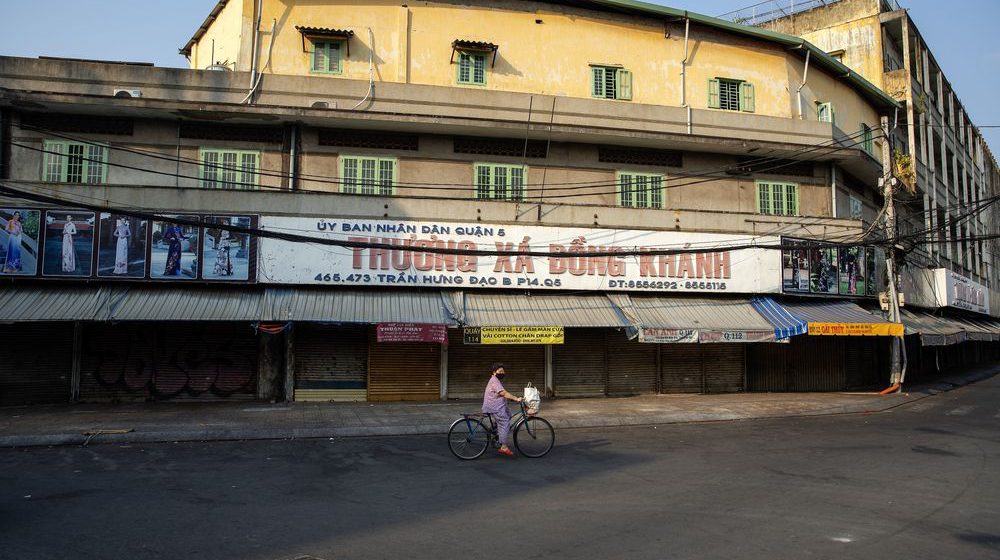-
Tough virus response has led to low infections, zero deaths
- Lockdown restrictions eased, but export markets remain shut

Shuttered stores in Ho Chi Minh City, April 1. Photographer: Maika Elan/Bloomberg
Vietnam flattened its coronavirus infection curve with a sledgehammer, and after some early success, it’s now starting to open up its economy again.
When two visitors from neighboring China emerged as Vietnam’s first cases in late January, the Communist Party-led government began imposing controls that would have been difficult in many democratic countries. Over subsequent weeks it banned virtually all domestic and international flights, ordered pharmacies to report customers buying cold medicine and quarantined more than 100,000 people in military camps, hotels and closely monitored homes.
Nguyen Duc Hieu, a 22-year-old student, was forced into quarantine when he returned from London in late March. En route to Ho Chi Minh City, the pilot informed passengers the plane was being diverted to the Mekong Delta because all quarantine facilities in the nation’s commercial hub were full.
Passengers were then herded into military vehicles, driven to a military school that had been converted into a quarantine camp and kept there for more than two weeks.
“We had six to eight people in a room with bunk beds and military blankets,” Hieu said. “We were provided some personal stuff at the camp, like a toothbrush, toothpaste, pillow and a mosquito net. Although it was uncomfortable, I think it was necessary.”
Zero Deaths
The crackdown appears to have paid off. With just 270 infections and no official virus-related deaths, Vietnam is easing lockdown rules in most of the country, allowing some businesses to reopen.
There’s some skepticism over the low infection numbers, given the limited testing in the population: By April 21, Vietnam had tested about 1,881 per million people, compared with about 14,500 in Singapore. Still, Vietnam’s approach has won praise from bodies such as the U.S. Centers for Disease Control and Prevention and the World Health Organization, and its outbreak stands in contrast to nearby Singapore and Indonesia, where restrictions are being extended as cases continue to spike.

An empty road in Ho Chi Minh City, April 22.
Photographer: Maika Elan/Bloomberg
“Vietnam had to deal with SARS, the bird flu and various financial crises,” said Fred Burke, managing partner at the Baker McKenzie law firm in Ho Chi Minh City, who advises the government on foreign investment rules. “They’ve learned they need to act fast and thoroughly.”
Trade-War Winner
Vietnam was already a favored location for foreign investors looking for an alternative manufacturing hub to China following escalating trade tensions between the U.S. and the world’s second-largest economy.
The government’s goal is now to build on that momentum. Pledged foreign direct investment rose 7.2% last year, with $24.6 billion flowing into manufacturing, according to the Ministry of Planning and Investment. That helped spur economic growth to 7.02%, the second-fastest pace since 2007.

Poeple wait at a rapid testing center near the Bach Mai hospital in Hanoi on March 31.
Photographer: Manan Vatsyayana/AFP via Getty Images
The virus’ impact on China — already seen by many foreign companies as getting more expensive with an aging population — makes Vietnam look even more attractive to businesses, said Vu Tu Thanh, senior Vietnam representative of the U.S.-Asean Business Council.
A survey of some of the group’s corporate members indicates they’re still re-evaluating their positions in China, Thanh said.
Risks Remain
Japan, Vietnam’s second-largest investor in the first quarter with $848 million, announced earlier this month it was earmarking $2.2 billion of its economic stimulus package to encourage manufacturers to shift production out of China. Vietnam is sure to benefit, said Burke, who’s a member of a government council advising on reforms to foreign investment administrative procedures.
The government allowed some companies to continue operating if they put in place social distancing rules. Officials also stepped up efforts to make government processes, such as investment license applications, easier, Burke said.
Samsung Electronics Co. was allowed to shuttle in more than 1,000 engineers from South Korea, an accommodation of one of Vietnam’s largest investors that makes about half of its smartphones in factories north of Hanoi. Most served mandatory 14-day quarantines in four-star hotels — not in military camps — while some were permitted into factories a few days after landing.
To be sure, Vietnam isn’t out of the woods yet. Deputy Prime Minister Vu Duc Dam, who chairs the National Steering Committee on Coronavirus Prevention and Control, cautioned on Friday the nation remains at risk for a major outbreak.
It must also brace for a prolonged slump in global demand, with many months before factories can start ramping up orders for everything from Nike Inc. shoes to LG Electronics Inc. home appliances.
Vietnam’s heavy reliance on exports — which amount to more than 100% of GDP, according to World Bank data — means growth has already taken a knock in the first quarter, slowing to 3.82%. The International Monetary Fund is projecting it could weaken to 2.7% for the full year.
The easing of restrictions also doesn’t mean that life will return to normal.
“For starters, the lockdown isn’t being lifted altogether,” said Gareth Leather, an economist at Capital Economics Ltd. in London, who’s predicting a contraction in GDP this year. “What’s more, people won’t return to their pre-crisis habits straight away. Fear of catching the virus means that people will continue to practice social distancing for quite some time.”

People adhere to social distancing rules as they wait in line for free rice at a ‘rice ATM’ in Ho Chi Minh City on April 22.
Photographer: Maika Elan/Bloomberg
The cost to many of the nation’s 96 million citizens is exemplified by kilometer-long queues at free “rice ATMs” — semi-automated distribution centers offering free rice to furloughed and laid-off workers.
The government believes its severe moves to blunt the virus ultimately saved the economy from more pain. “They’ve shown they’ve got a deep sophistication in how they handle problems,” said Adam McCarty, chief economist with Mekong Economics in Hanoi.
— With assistance by Xuan Quynh Nguyen
Source: Bloomberg


Leave a Reply